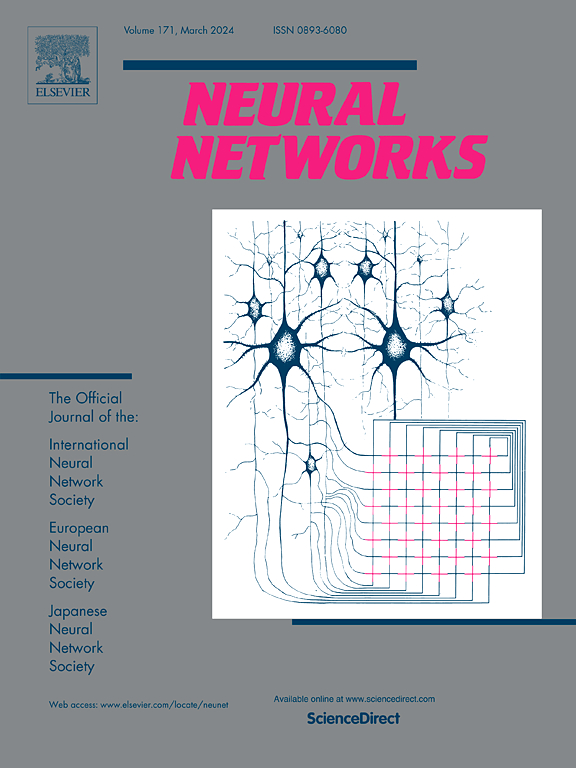BiLSTM-Filt:雷达词分割神经网络
IF 6
1区 计算机科学
Q1 COMPUTER SCIENCE, ARTIFICIAL INTELLIGENCE
引用次数: 0
摘要
雷达词提取是电子情报(ELINT)中多功能雷达(MFR)的分析基础。尽管神经网络提高了雷达词提取的性能,但目前的研究仍面临着复杂电磁环境和未知雷达词带来的挑战。因此,我们在本文中提出了一种很有前景的两阶段雷达词提取框架,包括分割和识别。为了填补雷达词分割的空白,我们从时间序列分析的角度建立了数学模型,并设计了一种基于双向长短期记忆与滤波模块(BiLSTM-Filt)的新型分割神经网络。通过训练该网络,提取出特定的雷达字结构特征,并将其用于检测脉冲序列中的雷达字。为进一步提高分段性能,设计了一种边界框回归方法,以合并来自子区域结构的信息。在典型的 MFR--"水星 "上进行的仿真实验表明,所提出的方法在复杂的电磁环境中(包括损坏的环境、各种脉冲背景和不同的脉冲序列长度)的性能优于基线方法。由于采用了人工设计结构,所提出的方法还能对未知雷达字分割进行试验。本文章由计算机程序翻译,如有差异,请以英文原文为准。

BiLSTM-Filt: Neural network for radar word segmentation
Radar word extraction is the analysis foundation for multi-function radars (MFRs) in electronic intelligence (ELINT). Although neural networks enhance performance in radar word extraction, current research still faces challenges from complex electromagnetic environments and unknown radar words. Therefore, in this paper, we propose a promising two-stage radar word extraction framework, consisting of segmentation and recognition. To fill the vacancy of radar word segmentation, we establish the mathematical model from the time series analysis viewpoint and design a novel segmentation neural network based on Bi-direction Long Short-Term Memory with a filter module (BiLSTM-Filt). Specific radar word structure characteristics are extracted by training the network and applied for detecting radar words in the pulse train. To further improve segmentation performance, a bounding box regression method is designed to merge information from sub-region structures. Simulation experiments on a typical MFR, Mercury, reveal that the proposed method can outperform the baseline methods within complex electromagnetic environments, containing corrupted environments, various pulse backgrounds, and variable pulse train lengths. Due to the artificial design structure, the proposed method can also make a trial on unknown radar word segmentation.
求助全文
通过发布文献求助,成功后即可免费获取论文全文。
去求助
来源期刊

Neural Networks
工程技术-计算机:人工智能
CiteScore
13.90
自引率
7.70%
发文量
425
审稿时长
67 days
期刊介绍:
Neural Networks is a platform that aims to foster an international community of scholars and practitioners interested in neural networks, deep learning, and other approaches to artificial intelligence and machine learning. Our journal invites submissions covering various aspects of neural networks research, from computational neuroscience and cognitive modeling to mathematical analyses and engineering applications. By providing a forum for interdisciplinary discussions between biology and technology, we aim to encourage the development of biologically-inspired artificial intelligence.
 求助内容:
求助内容: 应助结果提醒方式:
应助结果提醒方式:


